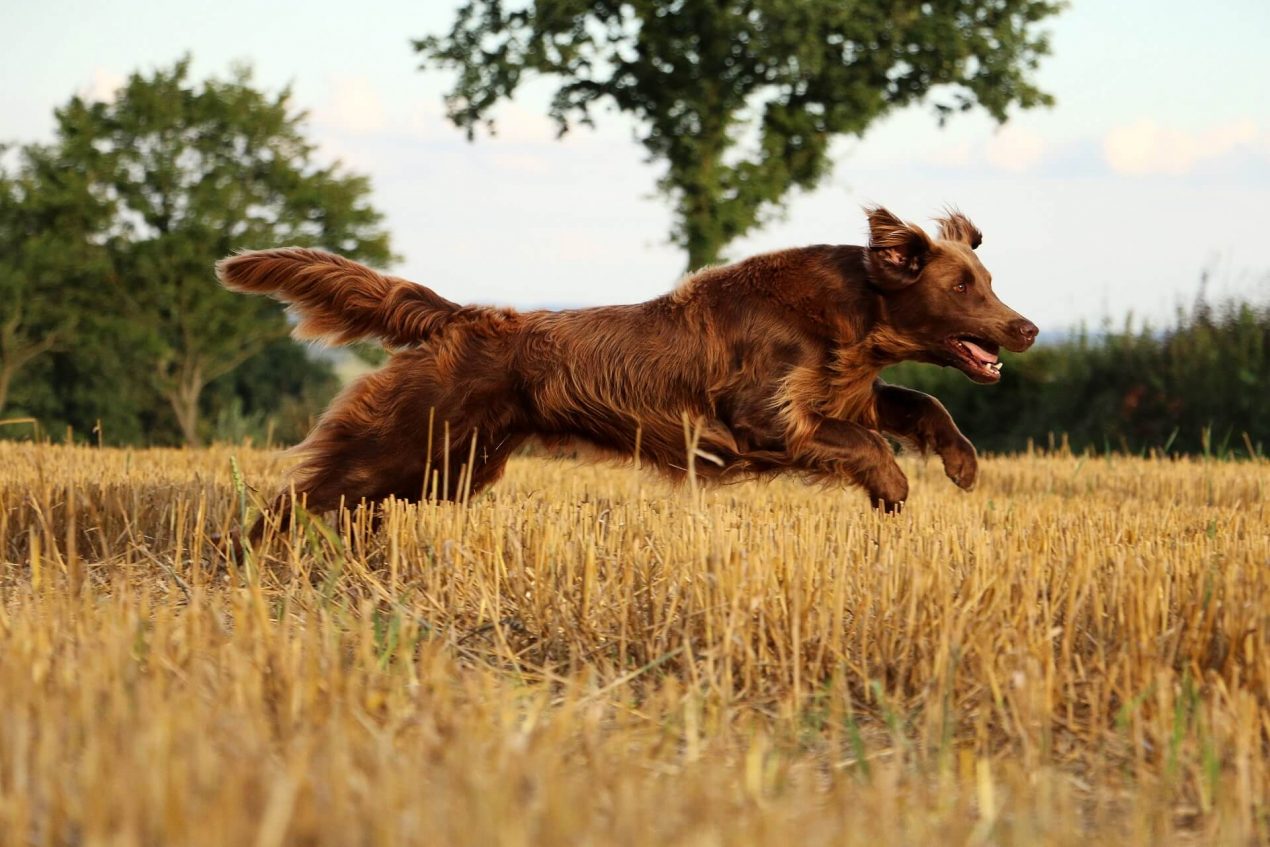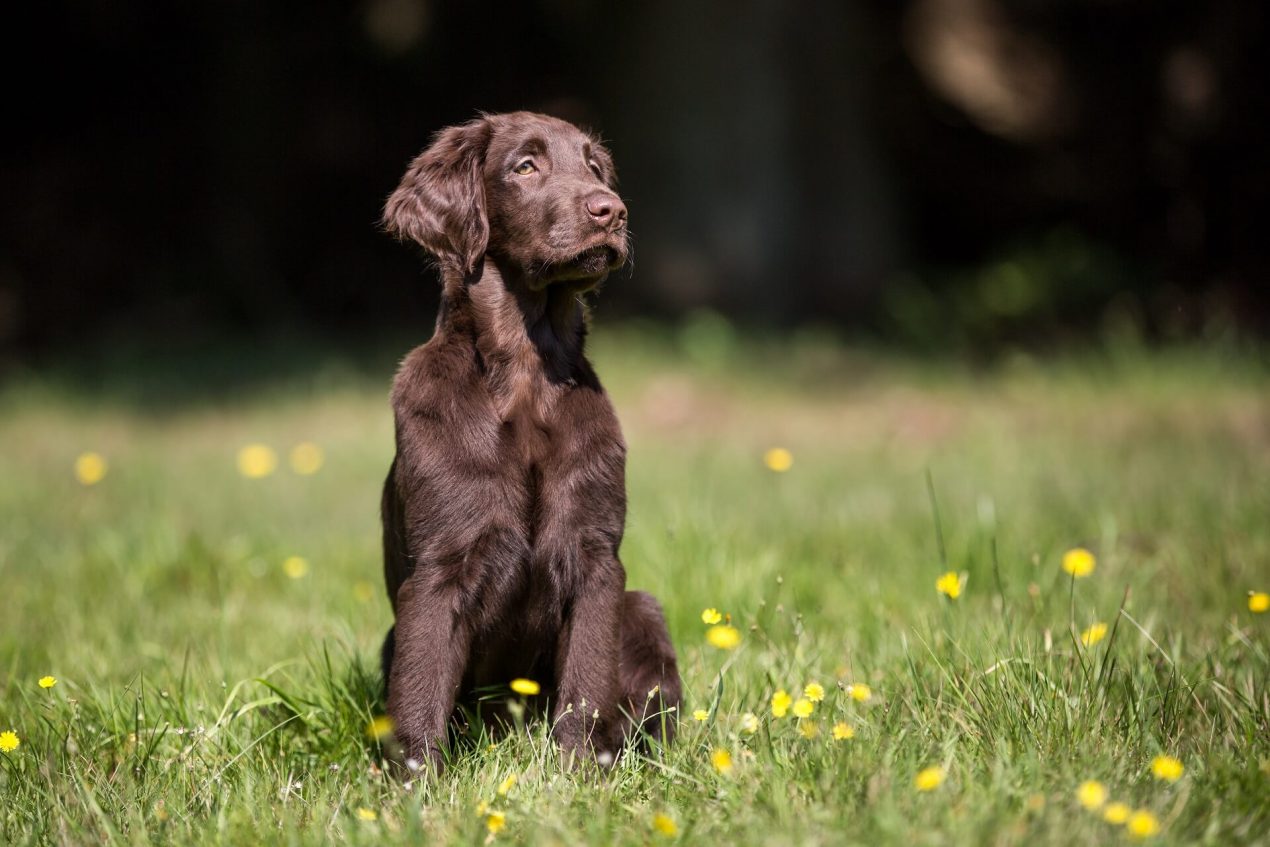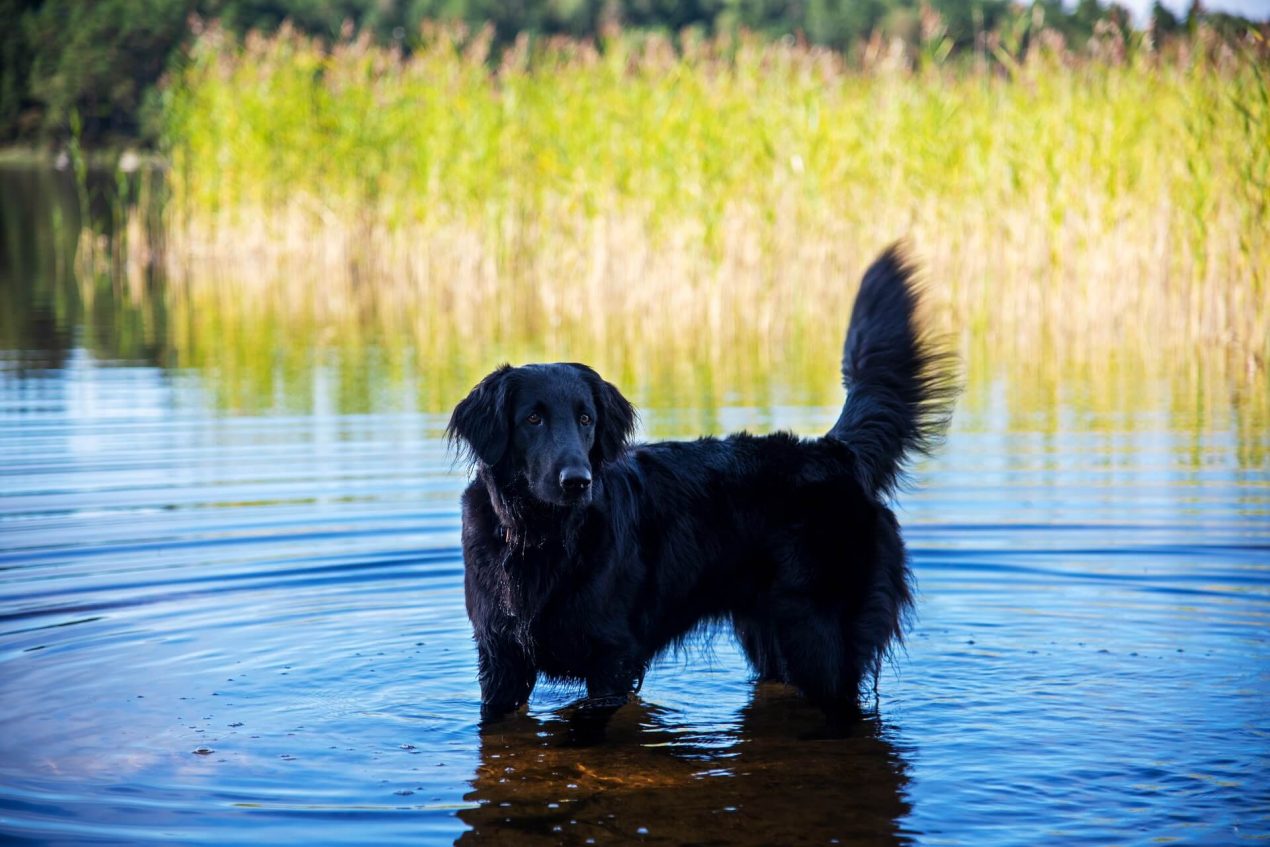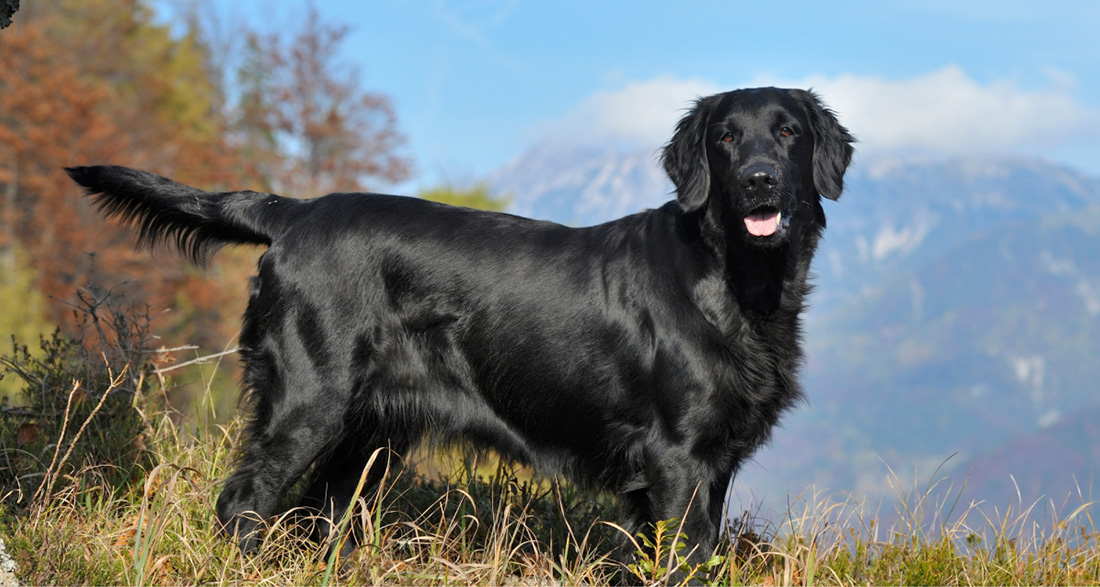Flat Coated Retrievers, originating from Britain, are officially recognized by the FCI (Fédération Cynologique Internationale). They are classified under standard number 121, in Group 8 – Retrievers, Flushing Dogs, Water Dogs, Section 1 – Retrievers. These dogs, known for their working abilities, also make great family pets.
History of the Flat Coated Retriever
The Flat Coated Retriever’s lineage traces back to the “Saint John’s Dog,” also known as the “Wavy Coated Retriever,” which was a smaller Newfoundland dog. This breed arrived in England in the mid-18th century with sailors and was known for its robust build and swimming prowess. By the 19th century, it was crossbred with other breeds, possibly Setters and Collies, to enhance its hunting and retrieving abilities. The Flat Coated Retriever, as we know it today, emerged around 1850, primarily as a hunting companion favored by the English aristocracy.
Despite its popularity, especially noted in Vero Shaw’s book “The Illustrated Book of the Dog” in 1881, the breed faced a decline in numbers with the rise of Labradors and Golden Retrievers. After World War II, dedicated breeders prevented its extinction, and it gained FCI recognition in 1954. A resurgence in popularity occurred in the 1980s, and since 1980, these rare retrievers have been bred in the United States under the supervision of the American Retriever Club.
Breed Overview
GROUP: Sporting
HEIGHT: 22 to 23.5 inches (female), 23 to 24.5 inches (male)
WEIGHT: 60 to 70 pounds
COAT: Medium-length, smooth
COAT COLOR: Black, liver
LIFE SPAN: 8 to 10 years
TEMPERAMENT: Affectionate, energetic, playful
HYPOALLERGENIC: No
ORIGIN: England
Temperament and Character
Flat Coated Retrievers are known for their friendly and playful nature, making them excellent companions, especially for families with children. Their playful disposition remains even into adulthood, making them unsuitable for a sedentary lifestyle. Their eagerness to please facilitates training, particularly in households interested in canine sports. Their affinity for water should be shared by their families.
| Affection Level | High |
| Friendliness | High |
| Kid-Friendly | High |
| Pet-Friendly | High |
| Exercise Needs | High |
| Playfulness | High |
| Energy Level | High |
| Trainability | High |
| Intelligence | High |
| Tendency to Bark | Medium |
| Amount of Shedding | Medium |

Acquiring a Flat Coated Retriever
Prospective owners should carefully consider if the friendly and intelligent Flat Coated Retriever suits their lifestyle. While they are good with children and other pets, they require ample exercise and mental stimulation. They do not thrive in isolation and need to be integrated fully into family life. Potential owners with demanding work schedules may find it challenging to meet the breed’s needs.
What to Look for When Buying
As Flat Coated Retrievers are rare, it’s essential to seek out reputable breeders to ensure the authenticity of purebred specimens. Beware of offers for mixed-breed Flat Coated Retrievers, as they may be of dubious origin. Responsible breeders prioritize personal interaction with potential owners, and regular veterinary documentation is provided for the puppies. Associations such as the American Kennel Club (AKC) and the American Retriever Club can assist in finding reputable breeders.
Development and Training of the Puppy
Flat Coated Retriever puppies are lively and require consistent yet affectionate training. Varied training methods are essential to keep them engaged, as they quickly lose interest in repetitive tasks. Positive reinforcement-based puppy classes offer an effective approach to training. These classes focus on making learning enjoyable for both owners and puppies and provide practical tips for everyday situations.

How to Care for a Flat Coated Retriever
A Flat Coated Retriever is just as happy in a large apartment as in a house with a garden. In both cases, you should be active and adventurous. Problems arise for Flat Coated Retrievers kept in kennels or left alone all day without activity. In such situations, the dogs can become neglected. With sufficient exercise, you can leave this dog alone for short periods occasionally, as they will likely sleep soundly. However, they are fundamentally family dogs and require close human contact.
Activities with a Flat Coated Retriever
Outdoor activities are essential for the Flat Coated Retriever’s daily routine. They make excellent companions for jogging, cycling, and horseback riding. Given their history as hunting dogs, they particularly enjoy retrieving and swimming. Various dog sports provide additional outlets for their energy:
- Dummy work
- Agility
- Competitive dog sports
- Flyball
- Tracking
Volunteering as a search and rescue dog can provide both dog and owner with social stimulation. Several organizations offer such opportunities.
Health and Grooming
Caring for a Flat Coated Retriever is straightforward. Regular brushing is usually sufficient, but during shedding seasons, you may need to brush more frequently. Ear, claw, and paw pad checks should be part of the grooming routine. Bathing with dog shampoo is unnecessary for these water-loving dogs. Any dirt or mud can be easily brushed out of their coat.

The Flat Coated Retriever is a rare breed known for its robust health. While issues like hip dysplasia (HD) or elbow dysplasia (ED) can occur, they are relatively uncommon. However, they may be prone to obesity, which can be managed with ample exercise and a high-quality diet. Remember to account for treats when calculating their food intake.
Interesting Facts
Due to genetic inheritance, yellow Flat Coated Retrievers can rarely occur in litters, although this color is not recognized in the breed standard. The breed’s gene pool consists of various breeds, with black being the dominant color. Purebred parents will produce black puppies, but mixed-breed parents can carry genes for brown and yellow. Brown Flat Coated Retrievers can have black parents but carry the brown gene, resulting in both color variations. In rare cases, yellow can also occur, although brown is dominant over yellow.
Do you own a Flat Coated Retriever or plan to get one? Share in the comments what you think makes them so special!


